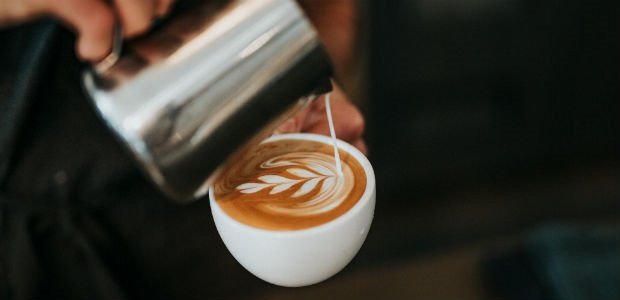We’ve always loved coffee, but in the last few years, coffee has become huge. But there are still a few myths around the way coffee is prepared, stored and made, so we spoke to Grant Browning, Operations Manager for Deluxe Coffeworks in Cape Town, to help dispel some of them.
ALSO READ: We tasted 6 South African instant coffees, and we all need to give Ricoffy a break
Myth 1: It’s okay to store your coffee in the fridge
Grant says this isn’t a good idea. “It introduces moisture, and moisture is never good for coffee. There’s also the condensation that happens once you remove an item from a cold place and then gets warmer, which isn’t great. You can possibly put it in the freezer, though, as long as it’s a dry freezer. It will add some life to your coffee, but you can’t keep it in there forever.”The best way to store coffee is in an airtight container in a cupboard, away from moisture, light and air.
Myth 2: You need a certain kind of bean to make espressos
Espresso-making is a process made possible by an espresso machine. “Espresso means three things: small, fast and for one person. To produce an espresso is to use high pressure and hot water to produce as condensed a beverage as possible,” says Grant.
Myth 3: Pouring coffee from a height makes a difference in taste
Grant and I joke that there aren’t scientific studies on this, but it is possible that this is true. “As it tumbles, it could aerate the beverage a bit more, so it’s definitely possible. I haven’t done any testing on the subject myself, but it is possible,” says Grant.
Myth 4: You need super expensive equipment to make good coffee
If you want to get the big, fancy coffee machine that takes up half your kitchen space and all the bells and whistles, go for it, but you don’t really need it. “If you really enjoy an espresso beverage, it’s best to get it made by a trained barista who knows exactly what he’s doing or go through the education yourself, which can tend to be quite costly, and the machine can be quite costly as well,” says Grant. “A plunger is a fantastic way to make coffee, as long as your beans are freshly ground and roasted and you’re making it well. Also, tailor that to your preference. The better quality coffee and the better your brewing process, the better coffee you’ll have,” he says. A pour-over can also be a great way to make coffee if that’s the way you like it. “Each brewing process is going to give you a different balance of flavours and tastes.”
Myth 5: You can keep coffee for ages
If you’ve bought a bag of pre-ground beans, then Grant says you’ve got about three to four weeks at best. But unground coffee can last from five to six weeks. He suggests that you buy smaller amounts over time, according to how much coffee you drink, so you don’t waste any.
Myth 6: The temperature of the cup doesn’t matter
“If you want your coffee to stay warmer for longer, then yes, it does. We perceive flavours differently at different temperatures, so definitely warm your cup,” says Grant.
Myth 7: Great coffee doesn’t need milk
This is just snobbery. If you like milk in your coffee, drink it that way. Grant says: “You could drink a fantastic whiskey and drink it neat or with ice. It all depends on you.”
Myth 8: Purer water doesn’t affect taste
Grant says that water can have a huge impact on the taste of coffee – but you don’t exactly need to be putting fancy bottled water into your coffee. If you are worried about the quality of the water, get a carbon filter.
Myth 9: Single origin means good coffee
“Single origin means you have a higher chance of knowing what’s going on with the coffee, as it comes from one place, sometimes as particular as a certain lot on a certain farm,” says Grant. “It’s a good place to start, but it doesn’t guarantee that it’s going to be good or to your preference. Good coffee means the least amount of defect possible and a pleasant flavour profile. That’s what makes it good. Beyond that is personal preference.”
Myth 10: All coffee has the same amount of caffeine
Varieties of the same kind of coffee can have different caffeine contents. No two coffees are exactly the same, just as no two wines are exactly the same.
Myth 11: Always use boiling water when you make coffee
“Never, ever, ever, ever,” Grant says, shaking his head. “Not just the water temperature, but the brewing environment – everything that’s in contact with the water and the coffee while it’s doing its thing. The whole environment should be between 88 and 90 degrees.” If you’re making plunger coffee, let the water sit for a minute before you pour it into the plunger. If you want to be really sure, get a thermometer.
Happy brewing!
WATCH: The German housewife who invented the paper coffee filter

